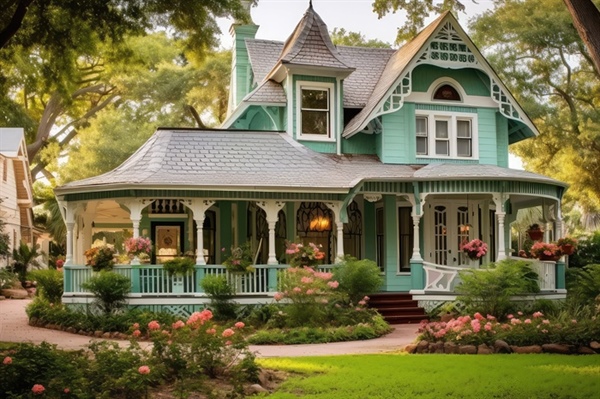How Do I Maintain the Character of a Historic Home During a Remodel?

Remodeling a historic home is a delicate process that requires balancing modern functionality with the preservation of timeless architectural charm. Whether it’s a Victorian, Craftsman, or Colonial-style home, maintaining the original details that define its character is key.
The challenge lies in updating the structure to meet contemporary standards while respecting its historical integrity. In this guide, we’ll explore essential aspects of historic home remodeling, including best practices for restoring original features, ways to introduce modern upgrades without compromising aesthetics, and the unique challenges of updating systems like electrical and plumbing.
We’ll also discuss navigating historic district regulations to ensure compliance while preserving your home’s legacy!
Best Practices for Restoring Original Architectural Features
One of the most rewarding aspects of remodeling a historic home is uncovering and restoring its original architectural elements. Features such as intricate moldings, hardwood floors, and built-in cabinetry define the home’s character and should be preserved whenever possible. Gentle restoration techniques, such as refinishing wood rather than replacing it, help maintain authenticity.
Salvaging original materials is another key practice. If components like doors, windows, or trim are damaged, repair should be prioritized over replacement. When necessary, sourcing period-appropriate replacements from architectural salvage yards can ensure continuity in design.
Professional restoration specialists can assist in carefully stripping old paint, repairing plaster walls, and refinishing original hardware. These approaches maintain the home’s historical integrity while ensuring it remains functional and beautiful.
Modernizing a Historic Home Without Compromising Its Charm
Integrating modern amenities into a historic home requires thoughtful planning to prevent clashes between old and new elements. A common strategy is to update mechanical systems discreetly—such as hiding modern wiring behind existing walls or using traditional-style switch plates to blend with historical aesthetics.
When adding contemporary elements, such as an open floor plan or an updated kitchen, it’s important to use design elements that complement the original architecture. Choosing cabinetry, countertops, and fixtures that reflect the home’s period style ensures a cohesive look.
For flooring and lighting, selecting materials and designs that mimic the original era helps maintain the historic feel. Whether it’s reproducing vintage tile patterns or selecting light fixtures inspired by the home’s period, these details play a crucial role in maintaining authenticity.
Materials and Techniques for Preserving Historic Elements
Choosing the right materials for a historic remodel is essential for maintaining the home’s integrity. Wood, plaster, and stone should be preserved whenever possible rather than replaced with modern substitutes. Traditional lime-based mortar, for instance, is better suited for historic masonry than modern Portland cement.
Restoration techniques such as repointing brickwork, using historically accurate paint colors, and refinishing rather than replacing woodwork help maintain the home’s character. In cases where replacement is unavoidable, custom millwork can replicate the original details.
For windows and doors, preserving original woodwork is often preferable to modern replacements. If the originals are too damaged, selecting historically accurate replicas made from high-quality materials ensures consistency with the home’s style.
Challenges of Updating Electrical and Plumbing in Older Homes
Upgrading electrical and plumbing systems in a historic home presents unique challenges due to outdated infrastructure. Knob-and-tube wiring and lead pipes, common in older homes, require careful replacement to meet modern safety standards without compromising structural integrity.
Retrofitting modern systems often involves creative solutions, such as running new wiring through existing walls or using flexible piping to minimize demolition. Concealing these updates within the home’s original framework helps maintain historical accuracy.
For heating and cooling, period-appropriate radiator covers or concealed ductwork can help integrate modern climate control without disrupting the home’s character. Working with experienced contractors ensures these updates are done with minimal impact on historic details.
Navigating Historic District Regulations When Remodeling
Many historic homes are located in designated historic districts, which come with specific remodeling guidelines. Homeowners must obtain approval from local preservation boards before making significant changes to the exterior or structural elements of their property.
Understanding the specific restrictions in your area is crucial. Regulations may dictate materials, colors, and architectural details that must be preserved. Working with architects and contractors experienced in historic renovations can simplify the approval process and ensure compliance.
Documentation and research play a key role in this process. Studying original blueprints, historical photographs, and local architectural guidelines helps align the renovation with preservation requirements while maintaining the home’s unique character.
How Tschida Construction Can Help Preserve Your Historic Home
Restoring and remodeling a historic home requires a delicate balance between modernization and preservation. At Tschida Construction, we specialize in thoughtful renovations that maintain the architectural integrity of historic properties.
Our experienced team understands the intricacies of working with original materials, integrating modern amenities seamlessly, and adhering to historic district regulations. Whether you need to restore intricate woodwork, update plumbing and electrical systems, or enhance your home’s livability without sacrificing its charm, we are here to help.
For expert guidance on preserving your home’s historic character while modernizing for comfort and efficiency, contact us today. Let us help you bring your historic home’s past and future together beautifully!